cryptozoology and related subjects-researched by myself FOLLOW LINK TO FACEBOOK GROUP -https://www.facebook.com/search/top/?q=cfzp-holsworthy%20and%20area%20cryptozoology%20group
Saturday, 25 February 2017
These Newly Discovered Frogs Are Adorable And Already In Peril
While frogs haven't traditionally been revered for their cuteness, a stunning new discovery could be a game-changer for all of ribbit-kind: According to a study published this week in PeerJ, scientists have discovered seven new frog species belonging to the genus Nyctibatrachus, commonly known as Night Frogs. Four of them are alarmingly tiny — in fact, they're thought to be some of the smallest frogs in all of India, where they were found.-READ MORE
Scientists find real life Jurassic Park in China, 8 new species discovered
China’s Zhejiang province may have been a real life Jurassic Park about 65 to 145 million years ago, according to scientists who found an assortment of dinosaur fossils, including eight new species of the prehistoric animals.
A total of 82 dinosaur fossil sites, with at least six dinosaur species and 25 types of fossil dinosaur eggs, were confirmed during the survey by a team of experts from the Zhejiang Institute of Hydrogeology and Engineering Geology and Zhejiang Museum of Natural History in China, between 2006 and 2013.-READ MORE
rare-non-biting-midge-discovered
 They are the scourge of tourists heading for the Highlands.
They are the scourge of tourists heading for the Highlands.
And now a new species of midge has been found near Loch Ness.
But this one won’t be sucking your blood – because it’s fang-free.
It turned up at conservation charity Trees for Life’s Dundreggan estate in Glenmoriston.
The rare Chironomus vallenduuki was found by entomologist Peter Chandler – the 11th unique discovery there.-read more
New species of bushbaby found in disappearing forests of Angola
 It’s a dwarf with big eyes, big ears and a big voice. The newly discovered Angolan dwarf galago belongs to the bushbaby family, members of which are found all over sub-Saharan Africa.
It’s a dwarf with big eyes, big ears and a big voice. The newly discovered Angolan dwarf galago belongs to the bushbaby family, members of which are found all over sub-Saharan Africa.
The creature’s most distinctive characteristic is its call: a chirping crescendo followed by a twitter, report Magdalena Svensson of Oxford Brookes University, UK, and her colleagues.-read more and see video
The fingernail frogs: Seven tiny new species of amphibians are discovered in India
After five years of extensive explorations in the Western Ghats in India, researchers have discovered seven new frog species, known as Night Frogs.
The adorable creatures are among the smallest in the world, and four of the new species are tiny enough to fit on a fingernail.
Despite only just being discovered, the researchers warn that five of the new species are under direct threat of extinction, and urge environmentalists to set up conservation programmes immediately.
Read more: http://www.dailymail.co.uk/sciencetech/article-4245262/Scientists-four-new-miniature-frog-species-India.html#ixzz4ZhhTZ89u
Follow us: @MailOnline on Twitter | DailyMail on Facebook
Why did this ancient worm have such huge jaws?
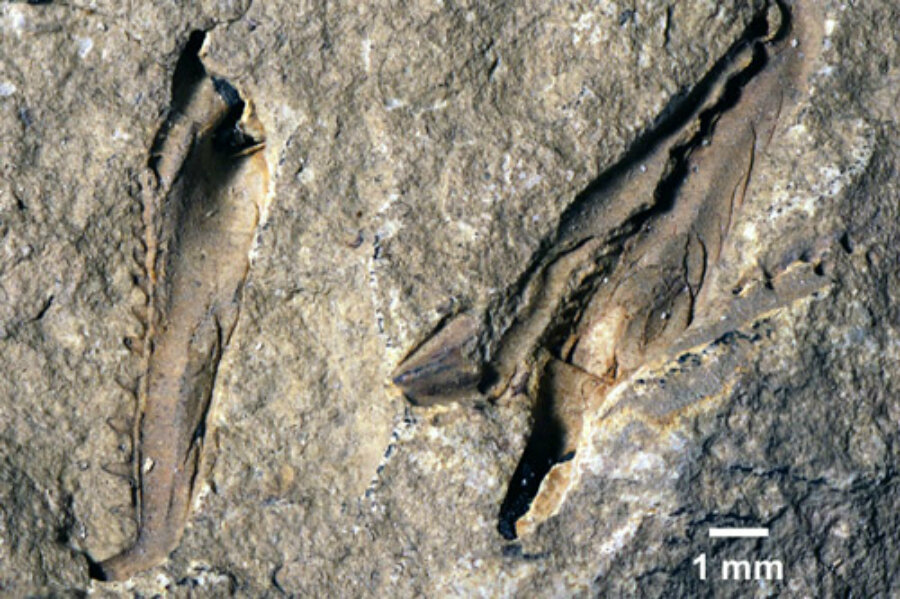 In 1994, Canadian scientist Derek Armstrong helicoptered into a remote corner of northern Ontario to collect fossils. The specimens he gathered that day, which sat in storage at the Royal Ontario Museum for more than two decades, have just helped scientists identify a new species of ancient marine worm.
In 1994, Canadian scientist Derek Armstrong helicoptered into a remote corner of northern Ontario to collect fossils. The specimens he gathered that day, which sat in storage at the Royal Ontario Museum for more than two decades, have just helped scientists identify a new species of ancient marine worm.
"This is an excellent example of the importance of looking in remote and unexplored areas," said David Rudkin, assistant curator at the Royal Ontario Museum, and "scrutinizing museum collections for overlooked gems."
In these 400-million-year-old rocks, researchers from the Royal Ontario Museum, the University of Bristol, and Sweden’s Lund University found jaws from the class Polychaeta, the marine relatives of earthworms.-read more
What is the 'hairy blob' or globster found on the Philippines shore?
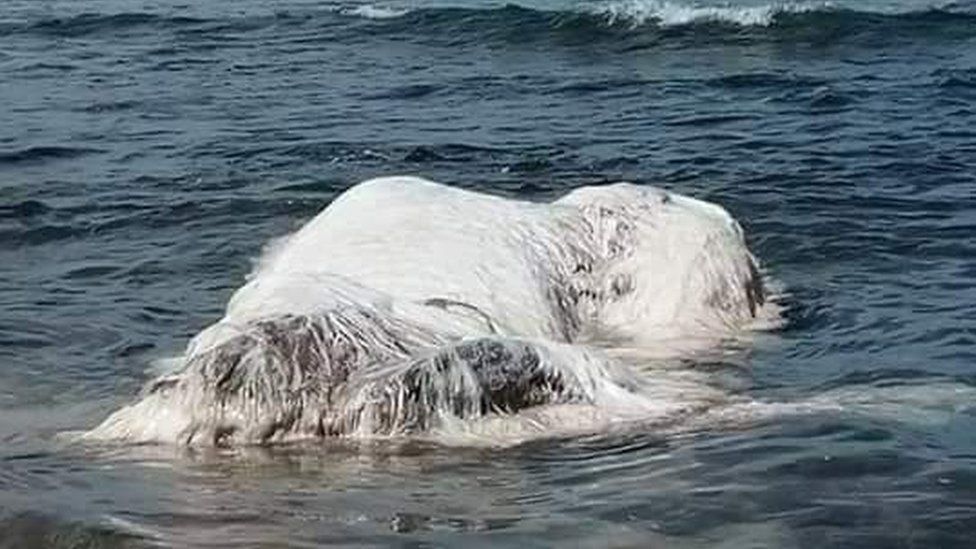 A six-metre-long "hairy" sea creature has washed up on the shore of Dinagat Island in the Philippines and people have been questioning what it is.
A six-metre-long "hairy" sea creature has washed up on the shore of Dinagat Island in the Philippines and people have been questioning what it is.
An unidentified creature like this is often known as a "globster" and they've been washing up for years.
While some people think it might be new species, experts aren't convinced.
Lucy Babey, head of science and conservation for the animal charity Orca, says it's definitely the carcass of a dead animal - probably a whale.
"It's definitely a very decomposed sea creature in the later stages of decomposition," she tells Newsbeat.-read more
Lemur facial recognition tool developed
A team of researchers has developed a facial recognition system that can identify individual lemurs in the wild with high levels of accuracy.
The plan is to use the technology to help radically improve the way the endangered species is tracked.
LemurFaceID proved 97% accurate when comparing the faces of two different lemurs.
The animals were named the world's most endangered group of mammals in 2012.
The system was developed by a team of lemur experts and computer scientists.
The researchers have published a paper detailing their work in the journal BMC Zoology.
Co-author Rachel Jacobs, a biological anthropologist from George Washington University, said: "The ability to consistently study individuals over long periods of time, as well as integrate data across different studies, are some of the challenges we face when studying wild animal populations.
"Senior author Stacey Tecot, (University of Arizona), and I weren't particularly satisfied with the common approaches used in lemur research, so we aimed to do-read more
Saturday, 18 February 2017
New shark of the Caribbean
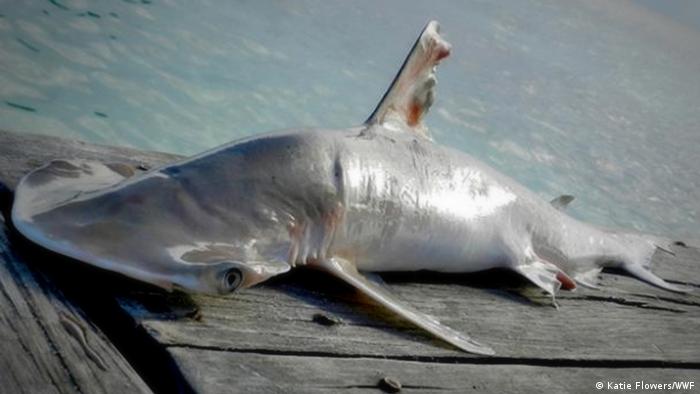 Marine wildlife researchers have found a new species of shark in the waters off the coast of the central American state of Belize. The WWF says the revelation serves as a conservation message. The Fisheries Department of Belize and researchers with the Florida International University (FIU) registered their discovery of a previously unknown species of Sphyrna or hammerhead shark this week.
Marine wildlife researchers have found a new species of shark in the waters off the coast of the central American state of Belize. The WWF says the revelation serves as a conservation message. The Fisheries Department of Belize and researchers with the Florida International University (FIU) registered their discovery of a previously unknown species of Sphyrna or hammerhead shark this week.
They say its range is relatively small and that it needs clean waters to survive, which is indicative of the health of the 300 kilometer long Belize Barrier reef - the longest in the northern hemisphere - where it was found.
Philipp Kanstinger, marine conservation expert with WWF Germany says the find underscores the importance of the reef as a biodiversity hotspot, and signals the need for action.
"The WWF is working with other partners to ensure this valuable location will be preserved in the future," he said in a press release.
The organization is also calling on the government of Belize to be actively involved in protecting the marine paradise, which is home to more than 500 species of fish, over 100 types of coral as well as a rich diversity of flora.
Sharks, dolphins, sea turtles, manta rays and the American marine crocodile are also among the wildlife known to swim in those parts. -read more
New species of marine worm discovered in Antarctica
 A team of Japanese scientists has discovered a new species of polychaete, a type of marine annelid worm, 9-meters deep underwater near Japan's Syowa Station in Antarctica, providing a good opportunity to study how animals adapt to extreme environments.
A team of Japanese scientists has discovered a new species of polychaete, a type of marine annelid worm, 9-meters deep underwater near Japan's Syowa Station in Antarctica, providing a good opportunity to study how animals adapt to extreme environments.
International efforts are currently underway in Antarctica to build long-term monitoring systems for land and coastal organisms from an ecological conservation standpoint. To this end, the accumulation of continent-wide fauna information is essential, but Japan is lagging behind in gathering and analyzing such data around Syowa Station, particularly in regard to coastal marine life.
To address this problem, in 2015 a team of researchers, -read more
New species of ant-eating spider with 'lock and key' genitals discovered
 A Queensland scientist who discovered a new species of ant-eating spider with unique "lock and key" genitals has named the new arachnid after a friend and fellow scientist.The spider species named Nosterella pollardi measures less than 1 centimetre in length and is only found Lord Howe Island off the coast of NSW.
A Queensland scientist who discovered a new species of ant-eating spider with unique "lock and key" genitals has named the new arachnid after a friend and fellow scientist.The spider species named Nosterella pollardi measures less than 1 centimetre in length and is only found Lord Howe Island off the coast of NSW.
The male ant-eating spider has specific genitals that work like a key fitting a lock with a well-developed hood that aids with reproduction, the ABC reports.-read more
Three new species found in Kermadec survey
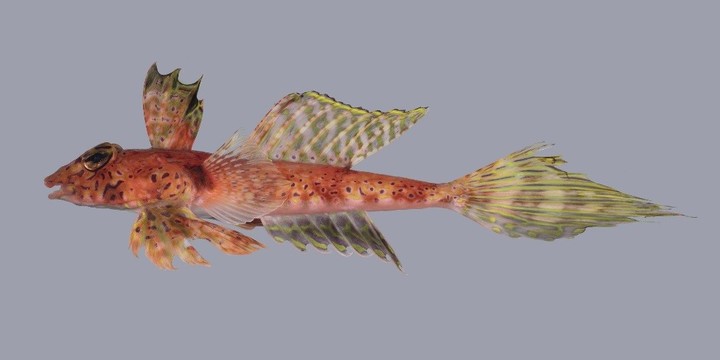 A small orange seahorse is among three new fish species discovered by New Zealand scientists in a survey of the Kermadec Islands.The survey, which incorporated marine mammal sampling as well as diving and offshore sampling, is the first of its kind and was conducted over 19 days on NIWA's research vessel, Tangaroa.
A small orange seahorse is among three new fish species discovered by New Zealand scientists in a survey of the Kermadec Islands.The survey, which incorporated marine mammal sampling as well as diving and offshore sampling, is the first of its kind and was conducted over 19 days on NIWA's research vessel, Tangaroa.
Seven organisations including NIWA, Auckland Museum, and Te Papa collaborated on the survey, which was conducted between October and November last year.
The objective of the survey was to improve the knowledge of the area for the 620,000 square kilometre marine sanctuary the government has proposed creating.
In total, 88 coastal and 166 offshore invertebrate species were provisionally identified, and 236 fish species.
However, many could not be properly identified onboard and that would be done over the next year.
Head of Natural Sciences at the Auckland Museum Tom Trnski, who was one of the co-leaders of the survey, said there were a number of fish that did not match known species.
At the moment they knew at least three of the species were new.-read more
The remains of a new, small 'horny-faced' dinosaur have just been uncovered in Mexico
 A giant asteroid struck the Earth 65 million years ago, an event which is largely believed to have driven the dinosaurs extinct. Today, paleontologists are still digging up remains from the days when dinosaurs roamed the Earth, and they're discovering new species more often than you might think.
A giant asteroid struck the Earth 65 million years ago, an event which is largely believed to have driven the dinosaurs extinct. Today, paleontologists are still digging up remains from the days when dinosaurs roamed the Earth, and they're discovering new species more often than you might think.
This month, researchers in Mexico discovered what they believe to be a brand new species after a decade-long expedition. They were working in the Ejido La Salada area of the desert in the state of Coahuila when they came across the fossilized remains of a dinosaur which they believe roamed the Earth 73 million years ago.-read more
Saturday, 11 February 2017
New beetle species poses as an ant's BACKSIDE to catch a ride on the insects
 A new species of beetle has been spotted catching a lift on army ants by attaching itself to its backside.
A new species of beetle has been spotted catching a lift on army ants by attaching itself to its backside.
The piggy-backing beetle uses its strong mouth parts to anchor itself to the ant and hitch a ride when moving between nesting sites - and it's almost impossible to spot.
Relatively little is known about the guest communities of army ants and scientists believe there are more species that still need to be discovered.
Read more: http://www.dailymail.co.uk/sciencetech/article-4211154/Cheeky-New-beetle-species-poses-ant-s-BACKSIDE.html#ixzz4YNxxdCev
Follow us: @MailOnline on Twitter | DailyMail on Facebook
New shiitake mushroom species found in Vietnam
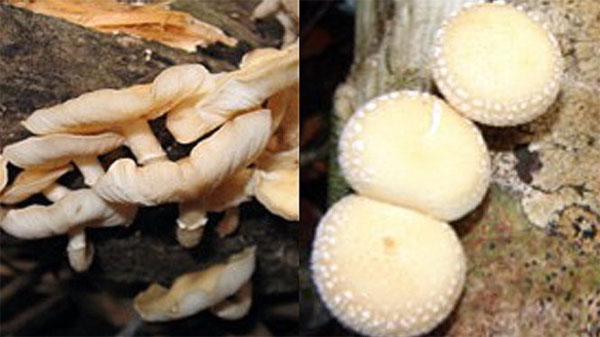 Associate professor Le Xuan Tham, a researcher specialising in fungi, told Tuoi Tre (Youth) newspaper on Wednesday that his research group had identified the new species as the second Shiitake species in Viet Nam and the eighth Shiitake species globally.
Associate professor Le Xuan Tham, a researcher specialising in fungi, told Tuoi Tre (Youth) newspaper on Wednesday that his research group had identified the new species as the second Shiitake species in Viet Nam and the eighth Shiitake species globally.
Before the new species was found, Lentinula edodes was identified as a Shiitake species native to Viet Nam, according to Tham.
The research group worked with experts from the University of Toronto to analyse the spores of the Shiitake mushrooms at the Da Lat Nuclear Research Institute before their findings were published in international science magazines.
 A new dwarf lemur species has been discovered in the dry and transitional forests of northern Madagascar, according to a paper published in the latest issue of the journal Primate Conservation.Dwarf lemurs (genus Cheirogaleus) are small, nocturnal primates endemic to the island of Madagascar.
A new dwarf lemur species has been discovered in the dry and transitional forests of northern Madagascar, according to a paper published in the latest issue of the journal Primate Conservation.Dwarf lemurs (genus Cheirogaleus) are small, nocturnal primates endemic to the island of Madagascar.
The new species was described by Dr. Cynthia Frasier of Omaha’s Henry Doorly Zoo and Aquarium and her colleagues from the United States, Madagascar and Australia.
The species’ scientific name is Cheirogaleus shethi. The proposed English name is the Sheth’s dwarf lemur.
“This new species is named after Brian Sheth, the Chair of the Board of the NGO Global Wildlife Conservation,” the researchers explained in the paper.
“Brian is deeply committed to biodiversity conservation worldwide, and is a leading philanthropist for species and ecosystem conservation.”
“He has supported many projects in Madagascar, including research and the establishment and management of nature reserves.”
So far, the new species is known from northern Madagascar, from Ankarana east to Bekaraoka in dry and transitional forests.-read more
New hammerhead shark species found in Belize
Shark researchers have discovered a new species of shark in Belize.
Researchers from Florida International University (FIU) were conducting DNA sequencing on bonnet head sharks, a species of hammer head sharks, when they made the discovery.
The bonnet head shark is found in the Caribbean, Latin America, and the United States; however, the DNA of the specie found in Belize did not match that of the bonnet heads found anywhere else. The bonnet heads found in Belize, which have yet to be named, have the same physical appearance as its counterparts within the region, but have large genetic differences.
Evaluating the DNA analysis conducted by Andrew Fields from Stony Brook University, FIU researchers estimated that the bonnet head sharks around the nation stopped interbreeding with those from Mexico, the United States and the Bahamas several million years ago.
Demian Chapman, lead researcher on the team that made the discovery, said that the find raises concerns about the sustainability measures are in place to keep the specie from extinction. While the bonnet head is ranked at “Least Concern” for extinction risk by the International Union for the Conservation of Nature, the union made the classification assuming there was a single species of bonnet head.
“Now we have to define the range of each of these species individually and assess them independently against where the potential threats are,” Chapman said.
Chapman who is currently leading a shark survey project called Global Finprint, believes that the discovery could be the door way to finding even more new species of sharks.
Global Finprint is an initiative seeking to determine the cause for the decreasing number of sharks and rays.
New species discovered in Antarctica
 A team of Japanese scientists has discovered a new species of polychaete, a type of marine annelid worm, 9-meters deep underwater near Japan's Syowa Station in Antarctica, providing a good opportunity to study how animals adapt to extreme environments.
A team of Japanese scientists has discovered a new species of polychaete, a type of marine annelid worm, 9-meters deep underwater near Japan's Syowa Station in Antarctica, providing a good opportunity to study how animals adapt to extreme environments.Read more at: https://phys.org/news/2017-02-species-antarctica.html#jCp
Gecko eludes foes with tearaway skin
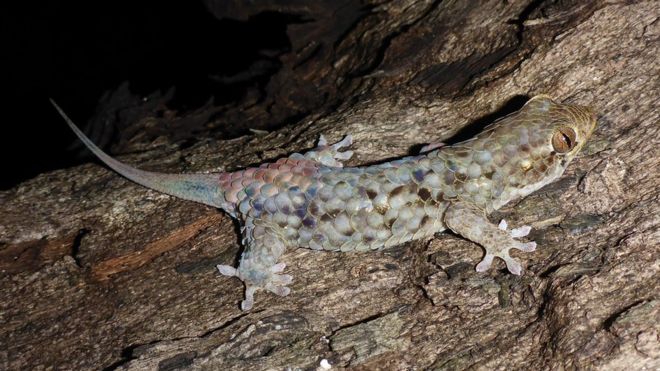 A newly discovered species of gecko has tearaway skin that leaves predators with nothing but a mouthful of scales when attacked.
A newly discovered species of gecko has tearaway skin that leaves predators with nothing but a mouthful of scales when attacked.
Many lizards can detach their tails when attacked, but fish-scale geckos have large scales that tear away with ease.
The new species is a master of this art, say scientists, having the largest scales of any known gecko.
The reptile, named Geckolepis megalepis, is described in PeerJ.
The skin of fish-scale geckos is specially adapted to tearing. The large scales are attached only by a relatively narrow region that tears with ease.
In addition, beneath the scales there is a pre-formed splitting zone within the skin itself.-read more
Endangered antelope 'may be wiped out'
 The death of more than 2,000 critically endangered Saiga antelope in Mongolia was caused by a disease that could now threaten the entire population.
The death of more than 2,000 critically endangered Saiga antelope in Mongolia was caused by a disease that could now threaten the entire population.
Wildlife Conservation Society (WCS) scientists, who work in the affected grassland area of Western Mongolia, say the disease originated in livestock.
It is a virus known as PPR or Peste des Petits Ruminants.
WCS veterinary scientist Dr Enkhtuvshin Shiilegdamba told BBC News that 2,500 Saiga had already died.
The animal carcasses are burned to prevent the spread of the disease.-read more
Orangutan squeaks reveal language evolution, says study
 Scientists who spent years listening to the communication calls of one of our closest ape relatives say their eavesdropping has shed light on the origin of human language.
Scientists who spent years listening to the communication calls of one of our closest ape relatives say their eavesdropping has shed light on the origin of human language.
Dr Adriano Reis e Lameira from Durham University recorded and analysed almost 5,000 orangutan "kiss squeaks".
He found that the animals combined these purse-lipped, "consonant-like" calls to convey different messages.
This could be a glimpse of how our ancestors formed the earliest words.
The findings are published in the journal Nature Human Behaviour.
"Human language is extraordinarily advanced and complex - we can pretty much transmit any information we want into sound," said Dr Reis e Lameira.
"So we tend to think that maybe words evolved from some rudimentary precursor to transmit more complex messages.
"We were basically using the orangutan vocal behaviour as a time machine - back to a time when our ancestors were using what would become [those precursors] of consonants and vowels.-read more
Sound of crickets 'could become a thing of the past'
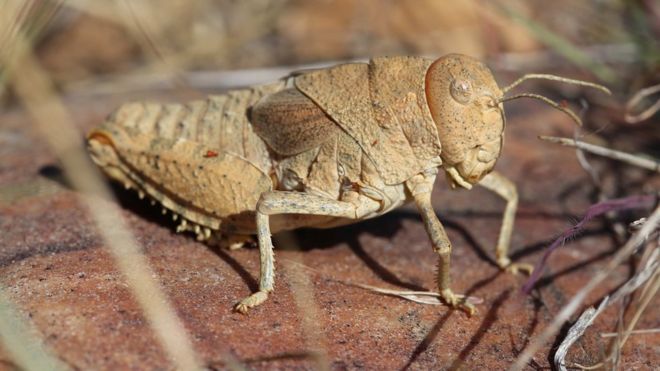 The first comprehensive assessment of Europe's crickets and grasshoppers has found that more than a quarter of species are being driven to extinction.
The first comprehensive assessment of Europe's crickets and grasshoppers has found that more than a quarter of species are being driven to extinction.
According to the International Union for Conservation of Nature (IUCN), the insect group is the most threatened of those assessed so far in Europe.
Europe harbours more than 1,000 species of grasshopper and cricket.
If we don't act now the sound of crickets could become a thing of the past, said the IUCN.
Crickets, bush crickets and grasshoppers - a group known as Orthoptera - live on grassland.
They are an important food source for birds and reptiles, and their decline could affect entire ecosystems.
Their habitat is being lost due to wildfires, intensive agriculture and tourism development.-read more
Orange-Hued Alligator Spotted in South Carolina
 A predatory beast with leathery orange skin is gallivanting through social media, sowing fear in its wake.
A predatory beast with leathery orange skin is gallivanting through social media, sowing fear in its wake.
That's because there have been recent sightings of a tangerine-colored alligator in South Carolina.
Earlier this week, members of a residential community in Hanahan, South Carolina, spotted an unusual sight near one of the retention ponds — an alligator with skin tinted an orange hue. Estimated to be 4 to 5 feet (1.2 to 1.5 meters) long, the apricot alligator was nicknamed "Trumpigator" by its human neighbors, local television newscast WCBD News 2 reported. [Alligator Alley: Pictures of Monster Reptiles]-Read More
Saturday, 4 February 2017
How Two Songbirds in the Western Ghats Evolved Into Multiple New Species
Birdwatchers called six small birds in the Western Ghats by the wrong names for more than a century. What they called laughingthrushes were not laughingthrushes and shortwings were not shortwings. A recent paper unravels who these birds’ relatives are and how they evolved. Such discoveries are rare because birds are well-studied, and their classification holds no surprises. Until now.
The erstwhile laughingthrushes and shortwings live in high-altitude cold, wet forests. Above an elevation of 1,500 metres, stunted evergreen trees grow in valleys surrounded by a sea of grassland. Called sky islands, these shola forests are as isolated from one another as sea islands. And this splendid separation spawns a diversity of species not only in frogs, lizards and snakes but also in birds that are found nowhere else. V.V. Robin, from the National Centre for Biological Sciences (NCBS), Bengaluru, and the Indian Institute of Science Education and Research, Tirupati, has studied shortwings for 15 years.
In 2002, he figured out what kind of forests the white-bellied shortwing favoured. Although he spent more time in the lowland rainforests, he found many more of these little blue birds in the sholas. The 40-kilometre-wide Palghat Gap is an insurmountable barrier for many species of birds, reptiles and mammals. On either side of this break in the hill ranges live two subspecies of the white-bellied shortwing. By analysing differences in the songs of the two populations, Robin concluded they were two species. But nagging questions about other inconsistencies drove him to investigate further.-read more
New Bucktoothed Ghost Shark Species Discovered
 A previously unknown ghost shark with rabbit-like teeth and a bulky head is making waves in record books; it's the 50th ghost shark species known to science, a new study reported.
A previously unknown ghost shark with rabbit-like teeth and a bulky head is making waves in record books; it's the 50th ghost shark species known to science, a new study reported.
At nearly 3 feet (1 meter) in length — about half as long as the height of a refrigerator — the newfound creature is the second largest species of ghost shark ever discovered, the researchers said.
"[Ghost sharks] in general have a pretty big head and their body tapers to a thinner tail. This one was really chunky in the front, and just a big bulky specimen," said Kristin Walovich, a graduate student at the Pacific Shark Research Center at the Moss Landing Marine Laboratories in California, and the lead researcher of a new study. [See Photos of the Freakiest-Looking Fish]-read more
Discovered: Possible new species of hammerhead shark
 Scientists have discovered what they believe to be a new species of hammerhead shark, prompting concerns about the species' vulnerability and whether conservation practices in place today are widespread enough to protect them
Scientists have discovered what they believe to be a new species of hammerhead shark, prompting concerns about the species' vulnerability and whether conservation practices in place today are widespread enough to protect themRead more at: https://phys.org/news/2017-02-species-hammerhead-shark.html#jCp
Subscribe to:
Posts (Atom)